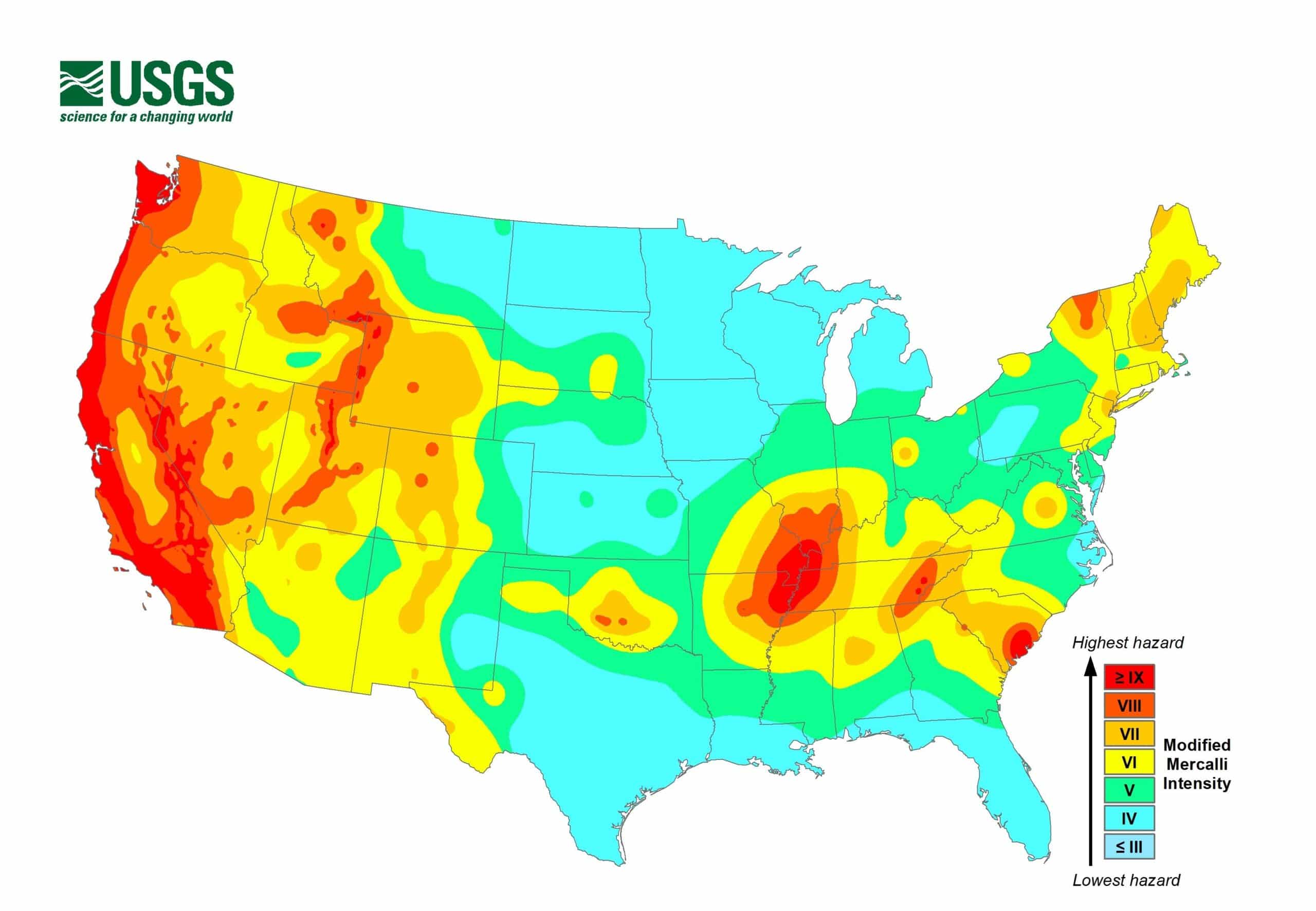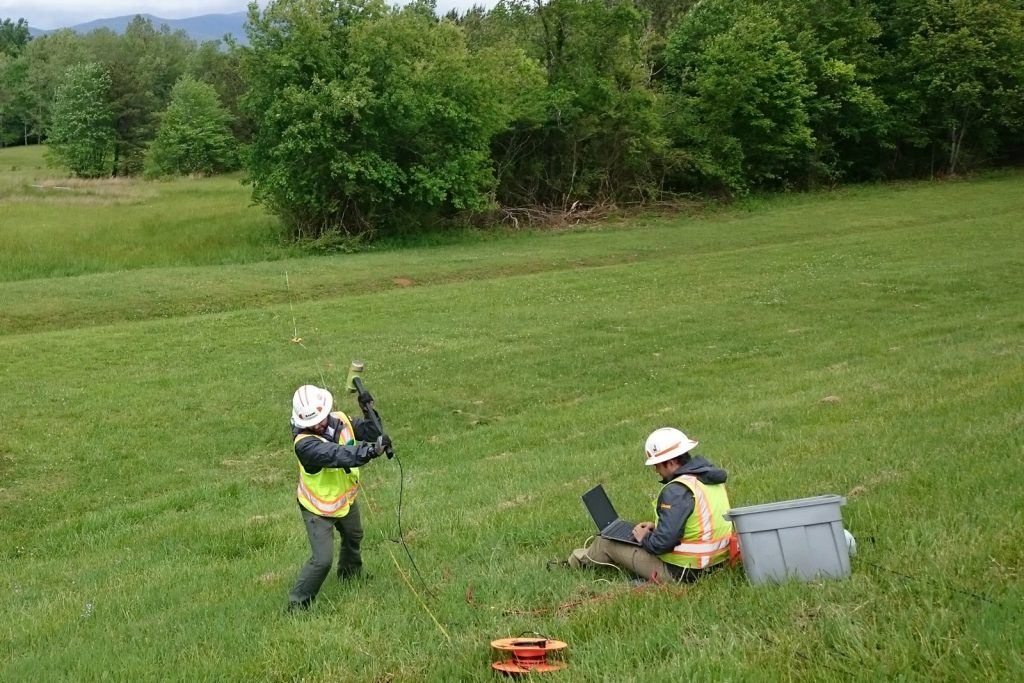August 11, 2020
Did you know that earthquakes often occur, but you may not feel them?
What Causes Earthquakes?
Tectonic plates make up the surface of the earth, fitting together like puzzle pieces. These pieces are slowly moving and sliding past each other. The edges of each plate are called plate boundaries and are made up of many faults, where many earthquakes occur. Since the plate edges are rough, they may get stuck while the plate moves, resulting in a big release of energy, or an earthquake.
Where Do Earthquakes Occur?

USGS map showing the intensity of potential earthquake ground shaking that has a 2% chance of occurring in 50 years.
Seismicity refers to the occurrence or frequency of earthquakes in a region. When you think of earthquakes, the west coast may come to mind as an area with high seismic activity. However, earthquakes also occur in the central and eastern regions of the United States. For example, Charleston experienced one of the most powerful and damaging earthquakes to hit the east coast in 1886 at a magnitude of 7.3. View photos of the damage.
The difference between the two areas is that fault lines are easily identifiable on the west coast. In the central and eastern region of the United States, our faults have been hidden and are covered by soils and deep sediments. Therefore, we must infer fault lines and potential earthquake likelihood based on geophysical testing and by reviewing regular background seismic activity. Visit USGS’ Earthquake site to view recent seismic activity.
What to Do In The Event of An Earthquake?
Should you experience an earthquake, the following steps can help keep you safer:
- Pick a safe place within 10-ft of you (sturdy desk/table, against interior corner/wall) away from windows/bookshelves.
- If outside, move away from buildings, trees, lights, and power lines.
- Drop, cover and hold-on in your safe place.
- Be ready for aftershocks or the aftereffects of earthquakes that can cause additional movement.
- Watch for fires.
- Remain calm.
How Does S&ME Design for Earthquakes?

S&ME employee-owners performing seismic refraction.
Seismic issues are becoming much more significant in the building and highway design process. The International Building Code (IBC) includes the seismic provisions for the design of buildings, while transportation structures are designed in accordance with seismic provisions produced by the American Association of State Highway and Transportation Officials (AASHTO) and/or state DOTs.
Since there is much more uncertainty about where earthquake hotspots are in central and eastern US, geotechnical earthquake engineering in this region can be challenging, but public safety requires that our built environment can survive the appropriate seismic hazard. A good design can reduce the uncertainty of seismic impacts on your structure. Having an expert involved early allows the engineer the opportunity to investigate the conditions and come up with innovative solutions to meet any given condition.
Within our Geotechnical Business Unit, our team can provide the following Earthquake Engineering Services:
- Seismic Site Classification
- Seismic Site Response Analysis
- Liquefaction Triggering and Consequences Evaluation
- Seismic Stability
Contact Us
 For more information on S&ME Earthquake Engineering services, please contact Kasey McWhorter, PE.
For more information on S&ME Earthquake Engineering services, please contact Kasey McWhorter, PE.
